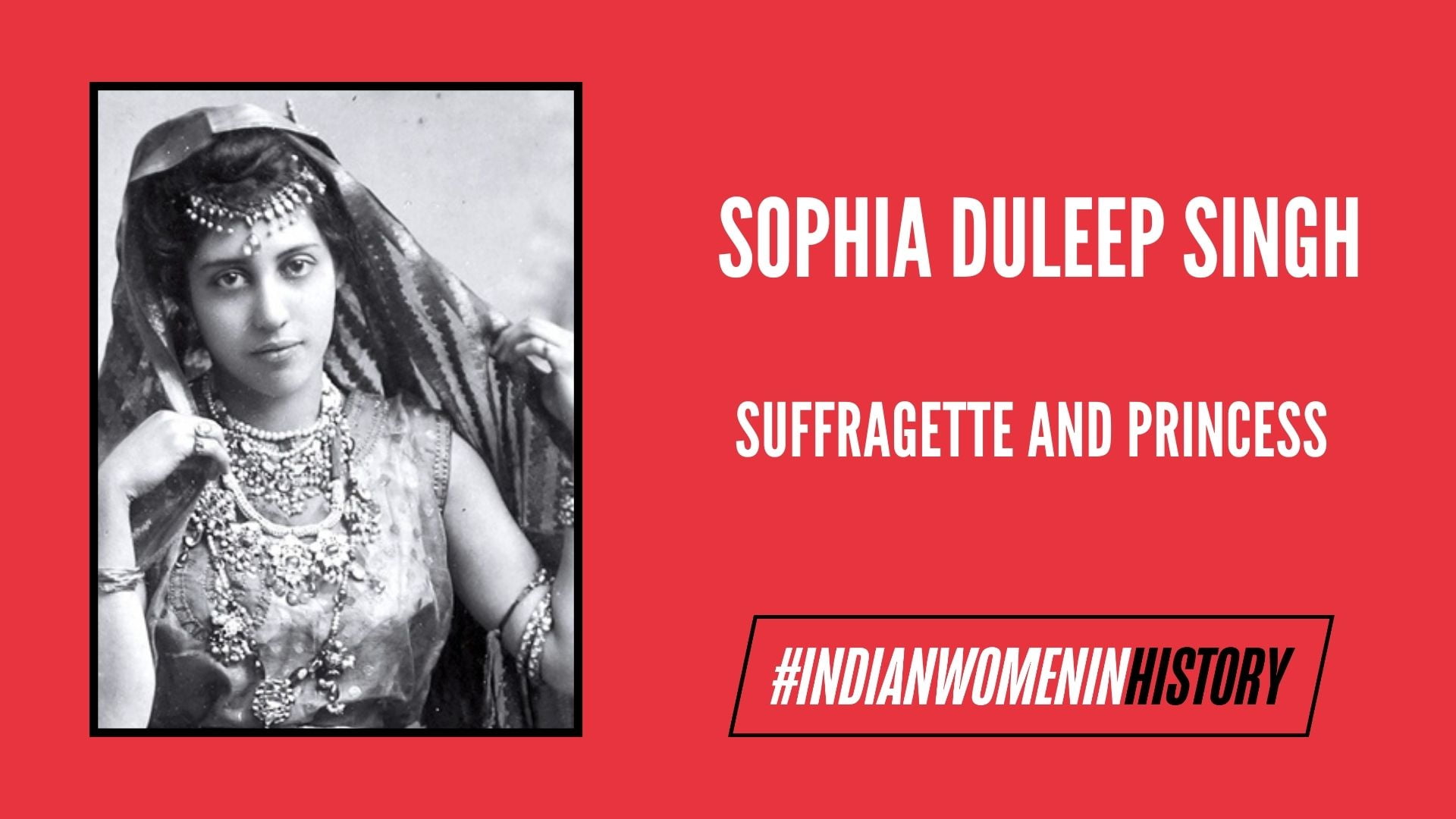“An embarrassment to the Empire for her ‘antics’ and her connection with Indian revolutionaries, Sophia was the quintessential Sikh, who stood up for the weakest.”
– Anita Anand in ‘Sophia: Princess, Suffragette, and Revolutionary’
The princess without an empire
Born into an illustrious ancestry of eighteenth-century India, Sophia Duleep Singh was the Sikh princess who inherited the complicated legacy of her grandfather, Maharaja of the Sikh empire, Ranjit Singh, as well as the last Sikh Maharaja deposed by the British – her father Duleep Singh.
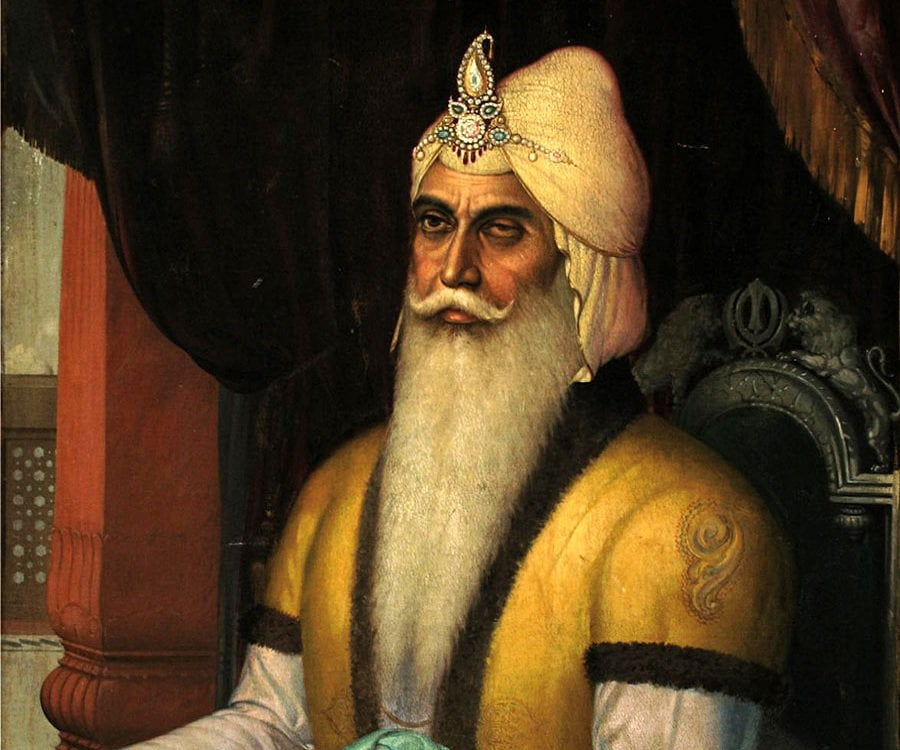
After Maharaja Ranjit Singh’s death in 1839, the mighty Sikh empire had to face a lot of obstacles. Despite the Queen sovereign Rani Jindaan making Duleep the heir apparent; at age the of five he was separated from his mother for eleven years, before being exiled to England at age 15.
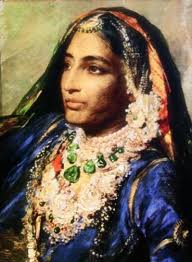
The British ensured that the Sikh empire crumbled, notwithstanding the internal/external feuds of the empire. The vast expanse and strength of Sikh rule had posed a threat to their colonial pursuits since long.
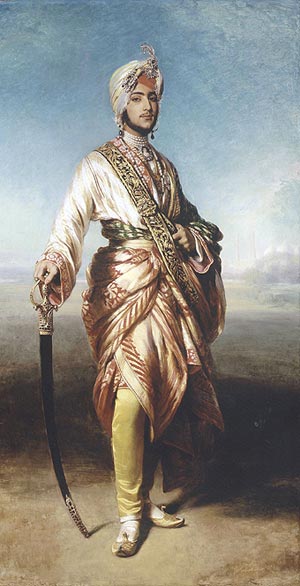
Queen Victoria took a fancy to the young Duleep and took him under her patronage. However, he who had once ruled most of northern India and owned what was then the largest diamond in the world, the Kohinoor (now part of the Crown Jewels) – was set on a collision course with Britain.
He had struggled to acknowledge the annexation of his lands and power. Despite having converted to Christianity and making his home in England, he wanted to wrest back his kingdom and faith. Though he reconverted to Sikhism, sabotage by the British foiled his attempts at wresting back his kingdom.
Sophia Duleep Singh’s early life
Born in 1876, Sophia Duleep Singh was the youngest daughter of Duleep Singh and his first wife, Bamba Muller. She was brought up at Elveden Hall on the Norfolk/Suffolk border. Queen Victoria was Sophia’s godmother and their traditional English estate was transformed into a Mughal palace with an ornate and exotic interior by the exiled Maharaja. It housed leopards, beneath the nursery and jewel-coloured parrots. By age 10, Sophia was well aware of her tumultuous identity and the baggage that came with it.
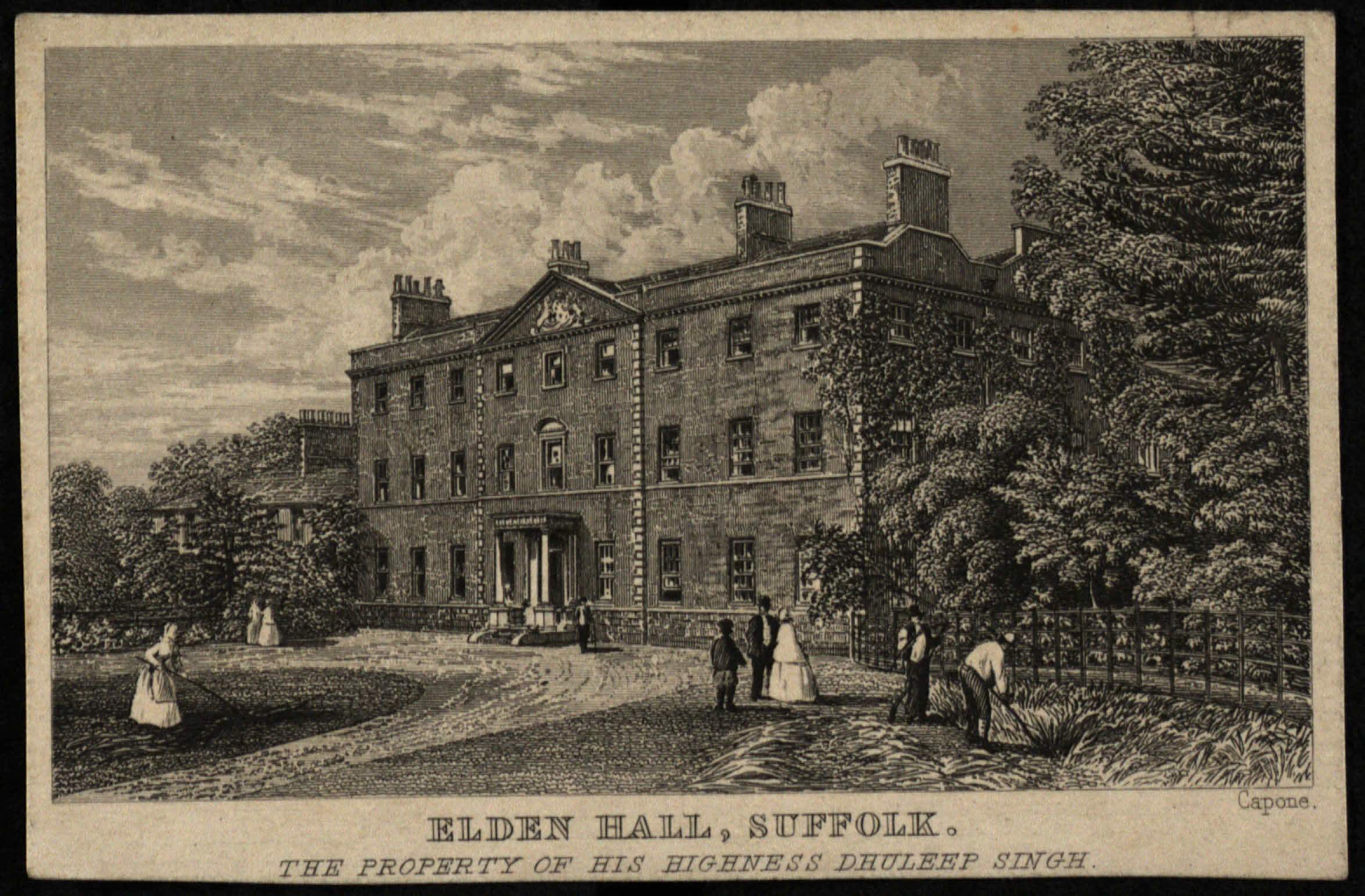
Duleep Singh’s efforts to regain his empire
Duleep Singh set sail for India, determined to stir up unrest and restore his birthright. But he and his family were arrested on 30th March 1886 at Aden on the British government’s orders. He never saw India again. However, the Maharajah refused to relinquish his claim and blamed Britain for the problems that befell him.
He was distraught and unfortunately fell into gambling, drinking and debt. This saw Sophia, her five siblings and mother, in dire straits and orphaned soon after. Queen Victoria, who was fond of Sophia and facing no threat from their state of affairs, gave her a house in Hampton Court. She was introduced to high society as a debutante, along with her sisters Princess Bamba and Princess Catherine Duleep Singh.
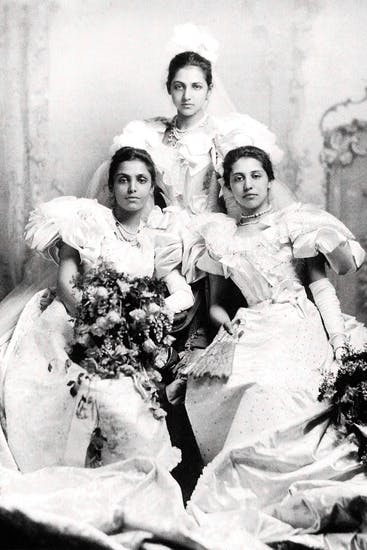
Turning point in her life
After her fathers’ death, Sophia attended the Delhi Durbar in 1903, where the Empire was being handed over to her father’s best friend Edward VII. Sophia realized that she and her family had lost to the very people she called friends. Later she also visited India in 1907. This was a moment of transformation.
She was influenced by the leader of the Swadeshi Movement, Lala Lajpat Rai and other revolutionaries. The concept of Indian independence from the British sowed the seeds of radicalism in her.
In India, she witnessed poverty and inequality on a scale she’d never seen before. Moreover, her sister Bamba couldn’t pursue medicine to become a surgeon in Germany, because it was ruled out as a profession for women, by virtue of legislation. All this and more made her a changed woman.
Involvement in the Suffragette cause
Her experience in India had a lasting effect on her, and she went on to become a militant activist for women’s rights in 1909. Emmeline Pankhurst, the woman Suffragette pioneer, selected Sophia as a leading member of the Women’s Tax Resistance League. With the kind of privileges she enjoyed, Princess Sophia could have lived an easy life, but she sought to fight inequality, both in England and India.
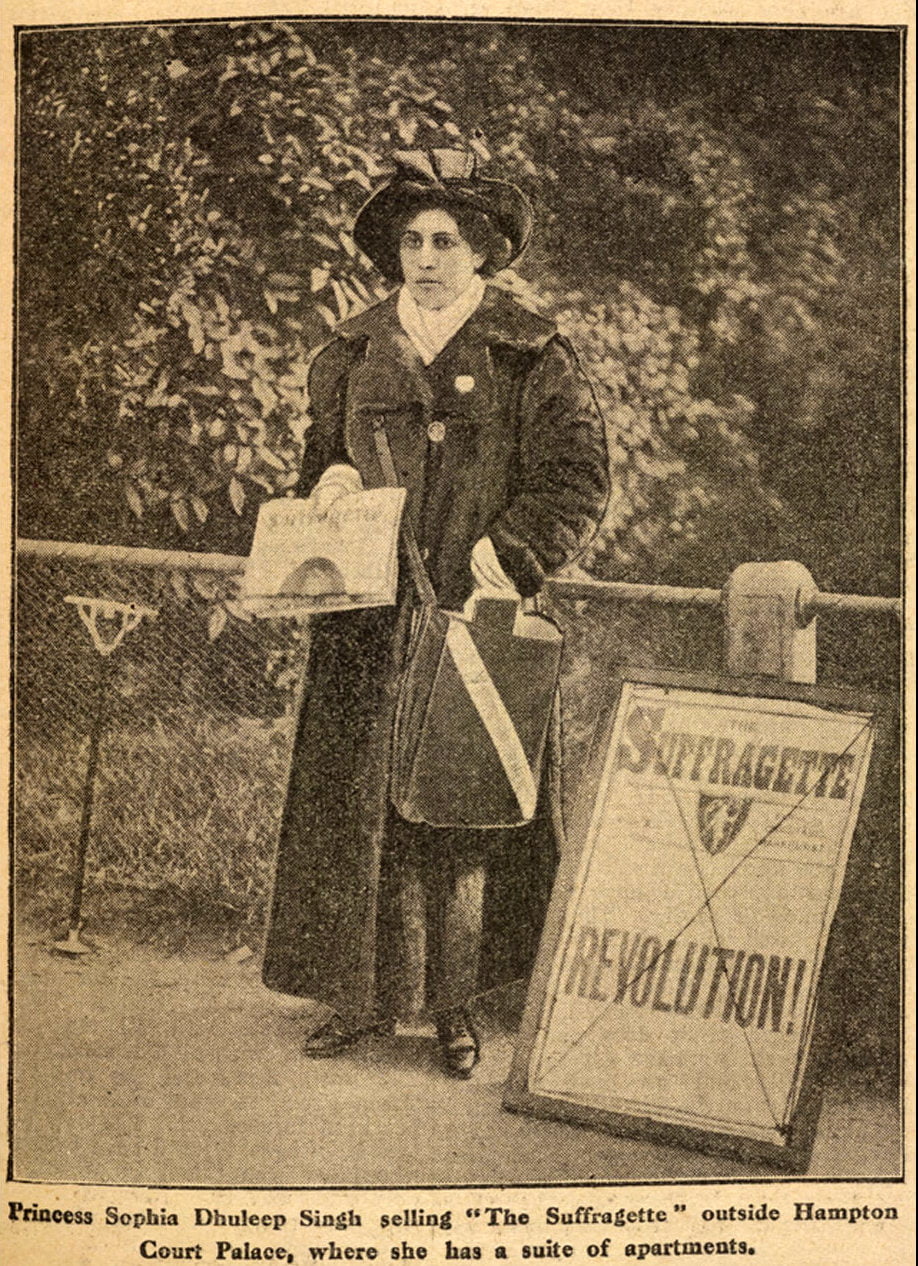
“Taxation without representation is a tyranny… I am unable to pay money to the state, as I am not allowed to exercise any control over its expenditure.” – Sophia’s reply in court, on being charged with refusal to pay licence fees and rates.
“Can anything be done to stop her?” – Sir William Connington, speaking about Sophia Duleep Singh upon spying a photo of her in The Suffragette.
Also Read: Noor Inayat Khan: ‘Spy Princess’ Of World War II | #IndianWomenInHistory
This was the first time the British took note of the Suffragette movement and a member of British monarchy stood boldly at the forefront. Princess Sophia refused to pay taxes on her carriage, servants and dogs. She fought for British women, voicing the slogan “no taxation without representation”. She believed in forceful protest as well as vocally supporting the movement.
Tireless dedication to civil rights
Princess Sophia combined her valuable work for women’s suffrage with her passion for Indian independence. While boosting women’s suffrage, she successfully arranged a flag-day for Indian troops in 1918, which triggered near-panic among the stalwarts of Whitehall and New Delhi.
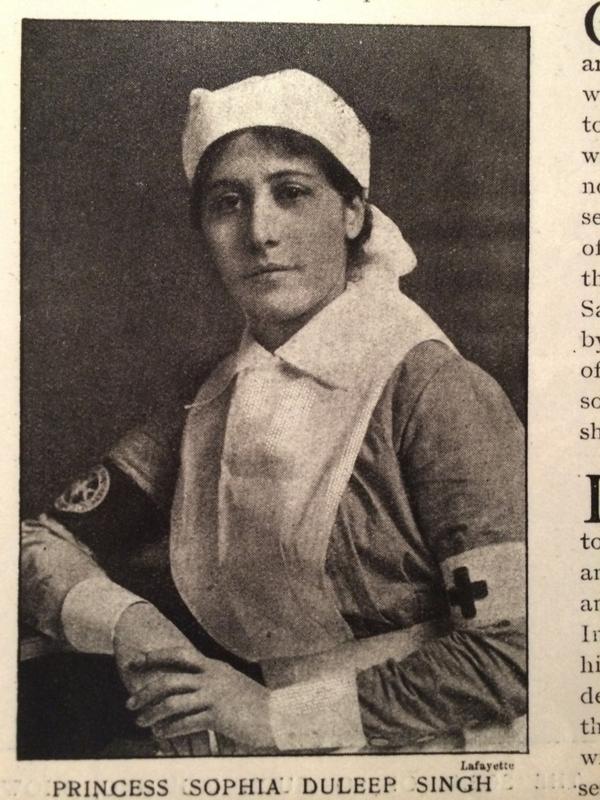
Besides her political awakening, she worked for the destitute Asian sailors of the East End, the liberation of women, the freedom of India and in 1914 (First World War), for the Indian soldiers wounded on the Western Front. Sikh soldiers couldn’t believe that the granddaughter of Ranjit Singh sat by their bedsides in a nurse’s uniform.
She raised money for Indian troops deployed on the Western Front, who were hardly equipped to combat the unfamiliar, bitter cold. The Sikh honour of Punjab royalty and that of India was intertwined in her persona. The ‘Lion’s granddaughter’ stood true to her lineage, in spirit and in action.
Queen Victorias’ God-daughter of Hampton Court had turned into an agitator. The editorial in the suffragist newspaper The Vote in 1910 argued that: “The Feminist movement is intimately associated with the aspirations of Young India“. Sophia represented this sentiment.
It was a strange paradox of her placement in social convention and divided loyalties which dissuaded her from being a leader in the real sense. However when the suffrage movement turned to direct-action militancy; which Emmeline Pankhurst called “argument of the broken pane of glass“, Sophia was a frontrunner when West End shop-windows shattered and Kew Gardens burnt as a mark of protest.

George V was befuddled as Sophia sold suffragist papers right outside her residence Hampton Court. Bailiffs entered her home, took away her goods and disenfranchised her, but the defiant Princess refused to pay both taxes and fines for non-payment. She threw herself at the prime minister’s car, fought the police, bankrolled suffragettes and refused to pay her taxes – goading the authorities to throw her into prison. King George V was so vexed by her behaviour that he exclaimed: “Have we no hold on her?”
The course of the Suffragette movement
Sophia’s first direct interface/skirmish happened on a ‘Black Friday’, on November 18, 1910, when she was 34. 300 women left Caxton Hall at the behest of Emmeline Pankhurst. They divided into groups and marched to the House of Commons to stage a protest. Prime Minister Herbert Asquith had sabotaged legislation that gave property-owning women the right to vote.
The Suffragettes’ campaign involved political lobbying, chaining themselves to railings, smashing windows and starving themselves to the point of death in prison. Sophia stood steadfast alongside Emmeline Pankhurst. In front of her and Emmeline, the Suffragettes were brutalized violently outside the House of Commons.
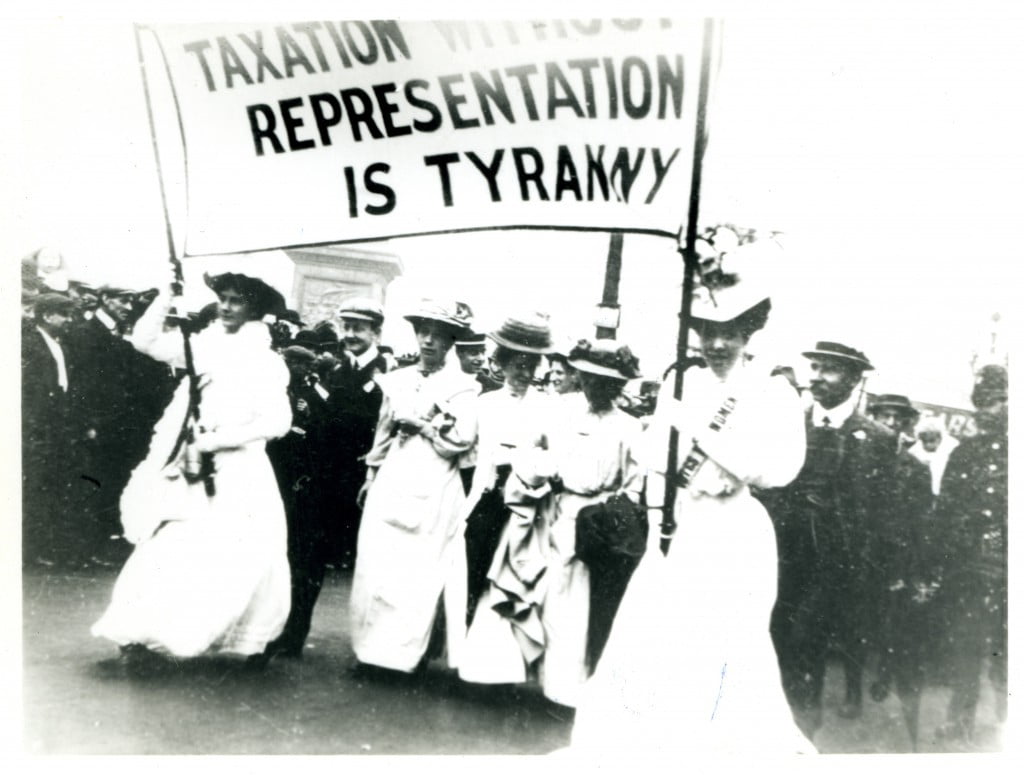
The police, rather than making arrests, had been directed by Home Secretary Winston Churchill to tire them out with various tactics. After five long hours, Sophia broke through the cordon to charge at an officer assaulting a woman. Having caught hold of him, she demanded his serial number and formally complained about police brutality. Churchill was compelled to sign a secret memo ordering officers to drop the investigation against suffragettes.
The King’s Speech to Parliament was scheduled to be held in February 1911. Sophia joined the Suffragette protest outside Downing Street, in an unassuming way so that the police perceived her as part of the crowd. As Prime Minister Asquith got into his car, the princess somehow made her way between the crowds waving a ‘Give Women The Vote’ poster. She threw herself at his vehicle and shouted Suffragette slogans. Though Asquith was furious, he couldn’t muster the courage to get Queen Victoria’s god-daughter arrested when her grandson was scheduled to make a speech.
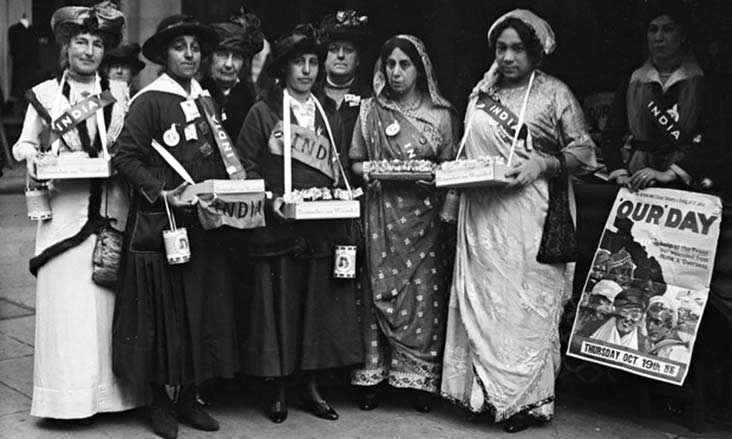
Queen Victoria had given her god-daughter a doll named ‘Little Sophie’. The princess, who had treasured it all her life, gave it to a housekeeper’s child named Drovna in her old age. She expressed her desire to be cremated in Punjab according to Sikh rites.
Before her death, in 1948, she was asked to contribute to Who’s Who. Her entry was brief. Under ‘interests’, she wrote: ”The Advancement of Women”.
Recognition of her endeavours
Princess Sophia was helming the Committee of the Suffragette Fellowship as its president when the royal consent was given to the Representation of the People (Equal Franchise) Act 1928, which gave women over the age of 21 and “of property” the right to vote at par with men.
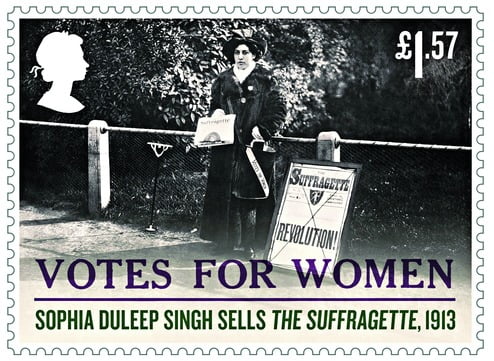
On February 6, 2018, events were held across the U K to commemorate the centenary of the passing of the Act. Sophia Duleep Singh (1876-1948), features in a new Royal Mail stamp which will be released on February 15. It has a photo of her selling the newspaper The Suffragette outside her residence, The Hampton Court Palace.
Also Read: 5 Sikh Women In History You Should Know About
Manmeet is an academic, researcher, blogger and a cultural critic, in the pursuit of some learning and unlearning. Being sensitive and observant of the nuances around her and putting her thoughts into words, remains her passion. She extrapolates her thoughts for a deeper insight into things in general, and gender dynamics in particular.
